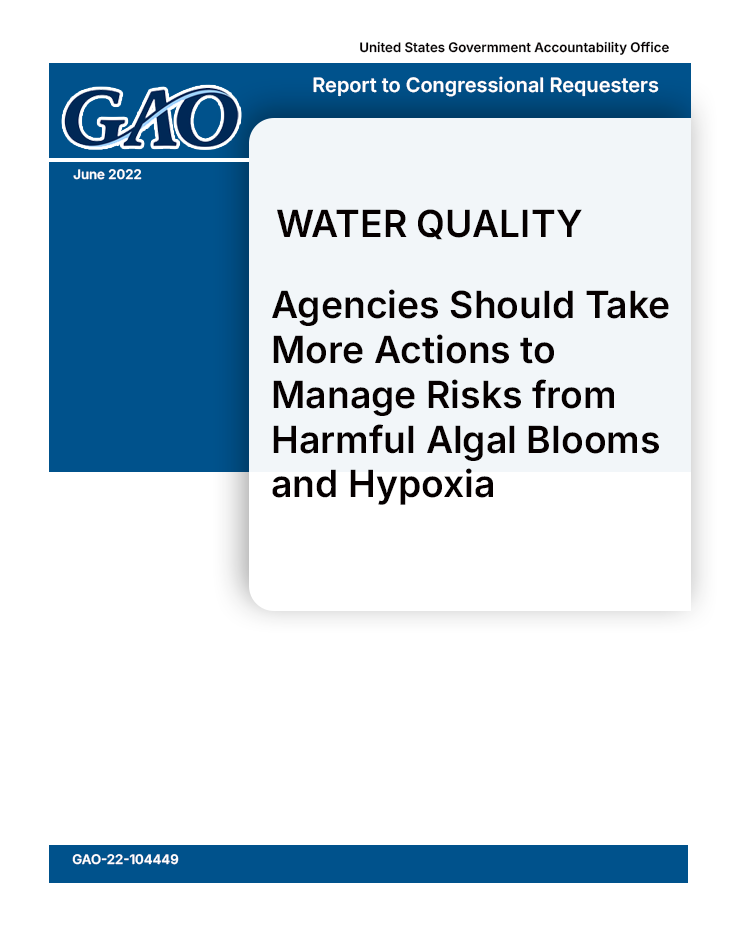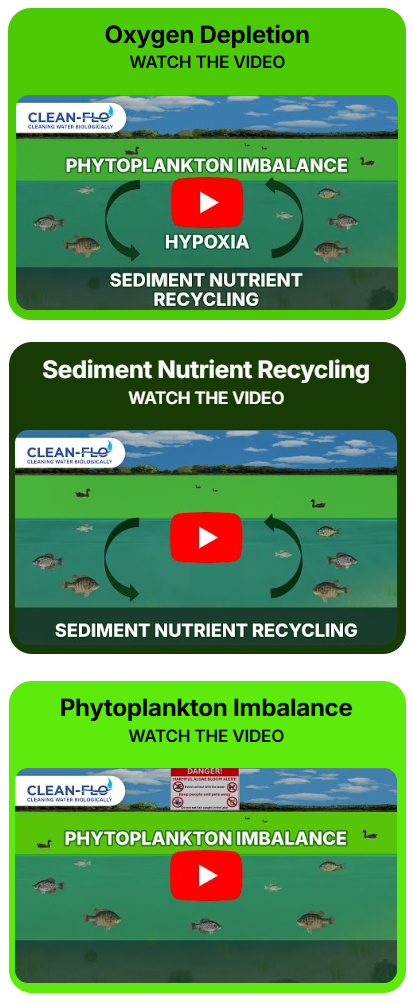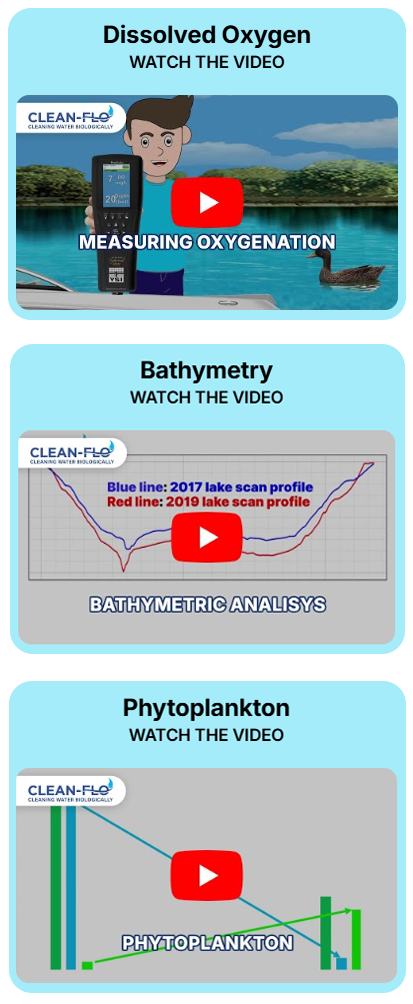
Despite decades of research and billions spent on treatments, the eutrophication of our natural water resources continues to worsen.
Albert Einstein once said, “If you can’t explain it simply, you don’t understand it well enough.”
This section of our website is here to do just that – Simplify the Science.
It’s designed to help you:
• Understand the root causes of eutrophication,
• Learn what must be done to address them at their source, and
• Know how to measure whether those actions are actually working.
Most lake management today focuses on symptoms — using algaecides, herbicides, weed harvesting, or dredging.
These “Whack-a-Mole” treatments not only fail, they make things worse by accelerating eutrophication.
Why? Because they ignore the root causes
Hypoxia
is caused at the bottom of the water column by decomposing biomass in the sediment.
Nutrient Recycling
is promoted by hypoxic conditions creating a constant nutrient supply for algae and weed growth from within the lake itself.
Toxic HABs
occur beacause cyanobacteria outcompete beneficial algae in these conditions.
And the way these root causes interact to degrade your lake and lead to toxic cyanobacterial HABs
Below are 9 short videos, arranged in a 3x3 grid to help you Simplify the Science and understand how to develop an effective Lake Management ACTION Plan
Together they explain how to
target root causes with specific actions and measure what matters



Oxygen Depletion
WATCH THE VIDEO
Oxygenation
WATCH THE VIDEO
Dissolved Oxygen
WATCH THE VIDEO
Sediment Nutrient Recycling
WATCH THE VIDEO
Bio-Dredging
WATCH THE VIDEO
Bathymetry
WATCH THE VIDEO
Phytoplankton Imbalance
WATCH THE VIDEO
Restore Balance Prevent HABs
WATCH THE VIDEO
Phytoplankton
WATCH THE VIDEO

Oxygen Depletion
WATCH THE VIDEO
Sediment Nutrient Recycling
WATCH THE VIDEO
Phytoplankton Imbalance
WATCH THE VIDEO

Oxygenation
WATCH THE VIDEO
Bio-Dredging
WATCH THE VIDEO
Restore Balance Prevent HABs
WATCH THE VIDEO

Dissolved Oxygen
WATCH THE VIDEO
Bathymetry
WATCH THE VIDEO
Phytoplankton
WATCH THE VIDEO
There are 10 more pages under this Simplify the Science section. Each one enables you to go a little deeper in understanding the science of restoring natural water resources and Saving the lake Lifestyle.
With the knowledge and insight gained from these videos you will be able to answer the key 5 questions that everyone responsible for the stewardship or management of a lake, dam or reservoir must be able to answer:
Over three decades of using algaecides, herbicides, alum and other phosphorus precipitants, aeration systems and more to fight the symptoms of eutrophication has proven that none of these symptomatic treatment provide a sustainable, holistic way to remediate and restore a lake.
That was confirmed by the Government Accountability Office report which said you have to understand the Root Causes and develop technologies and actions that target them. It also emphasized the need for methodologies to be developed to better monitor and assess a lake’s condition and objectively track the success or failure of remediation programs in targeting root causes to reverse eutrophication and prevent toxic cyanobacteria HABs. According to a Government Accountability Office report, the key is to understand the root causes of eutrophication and develop solutions that target those root causes directly. The report also says we need better methods to monitor a lake’s condition and measure the success or failure of these efforts.
So the answer to the question “How do you remediate and restore a lake and prevent toxic HABs” is by targeting and fixing the root causes of the problem.



The three root causes are
-Hypoxia,
-Sediment Nutrient Recycling and
-Phytoplankton Imbalance
Together they act synergistically to set up feedback loops that reinforce their effect undermining the Food Web that maintains water quality naturally, ultimately leading to toxic HABs and loss of the Lake Lifestyle.


There are three key ACTIONs that must be taken
-Oxygenation eliminates Hypoxia and suppresses nutrient recycling
-Bio-Dredging depletes the sediment nutrient stockpiles that fuel nutrient recycling
-Bio-Augmentation with micro-nutrients supports the growth of beneficial algae and zooplankton populations to restore phytoplankton balance and the Food Web.
These actions work synergistically to establish their own feedback loops that work in your favor against the mechanisms that drive the process of eutrophication and strengthen the resilience of the lake to future challenges.


You have to Measure What Matters – which is how effectively the ACTIONs are working on the Root Causes.
So you must measure
-Oxygenation and the elimination of hypoxia by measuring the volume of water that is hypoxic and the surface area of sediment that is hypoxic.
-Bathymetric data to quantify the volume of sediment that has been removed by Bio-Dredging.
-The phytoplankton population profile, to ensure that cyanobacteria are not dominant and that there is biodiversity and competition to them from beneficial algae species and that zooplankton populations have been restored.
CLEAN-FLO
827 Lincoln Avenue, Suite 1
West Chester, PA 19380
Phone: 800-328-6656
E: contact@clean-flo.com


